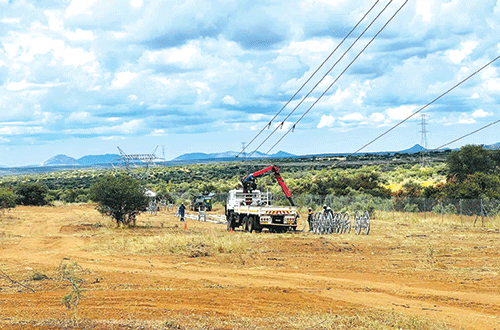The national power utility, Namibia Power Corporation (NamPower), should focus on the transmission network and encourage genuine independent power producers (IPPs) with no NamPower shareholdings to contribute to the national grid. This advice was given by local economist Robin Sherbourne.
“Over time, one can imagine a situation whereby NamPower increasingly focuses on strengthening the national electricity grid into which genuine IPPs, with no NamPower shareholding, deliver power based on price and competition. NamPower should not constitute a bottleneck to attracting private sector investment into the electricity sector,” he advised in the recently-released Institute for Public Policy Research (IPPR)’s fourth quarter (2023) economic review.
NamPower’s principal activity is power- generation, transmission and energy trading within the Southern African Power Pool (SAPP), Africa’s largest multilateral energy platform. The entity provides bulk electricity to regional distributors, mines, farms and local authorities in Namibia.
Sherbourne stated that Namibia’s modified single buyer (MSB) policy could be changed further to allow IPPs to deliver more than 30% of the power required by individual consumers.
The MSB policy is an important step towards increasing competition in the power business. This model allows selected electricity users and IPPs to transact directly for a portion of their electricity demand.
The MSB seeks to boost competition, expand customer options and increase generating self-sufficiency.
It also aims to reduce overall electricity costs by facilitating bilateral transactions throughout Namibia’s integrated electrical grid.
“NamPower is currently a publicly-owned natural monopoly, whose prices are regulated by the Electricity Control Board. However, over the decades, the company has struggled to deliver new generating capacity, and it has yet to be seen whether the four generating projects it currently envisages will actually get off the ground. IPPs have entered the market, and far larger IPPs are likely to do so as Namibia’s green hydrogen initiative gathers pace,” the economist continued.
Financial performance
NamPower’s financial performance was impacted by the economic downturn over the past five years, which was exacerbated by the Covid-19 pandemic. The utility’s revenue for the year remained static at N$6.5 billion due to a decrease of 5% in overall sales volumes (from 3 903 GWh to 3 701 GWh).
These figures were shared in NamPower’s 2022 integrated annual report.
“Cash generated from operations decreased from N$992.4 million during the previous year to a negative cash generated of N$350.2 million as of 30 June 2022, attributed primarily to the increased cost of electricity and slow collection of revenue from customers,” reads the annual report.
Meanwhile, there was a slight increase in demand of 3.4% (58 GWh) from 617 MW last year to 638 MW recorded at year-end. These factors combined resulted in the utility posting a loss before interest and tax, amounting to N$2.3 billion, for the first time in five years.
This compares to a profit of N$1.1 billion during the previous financial year.


